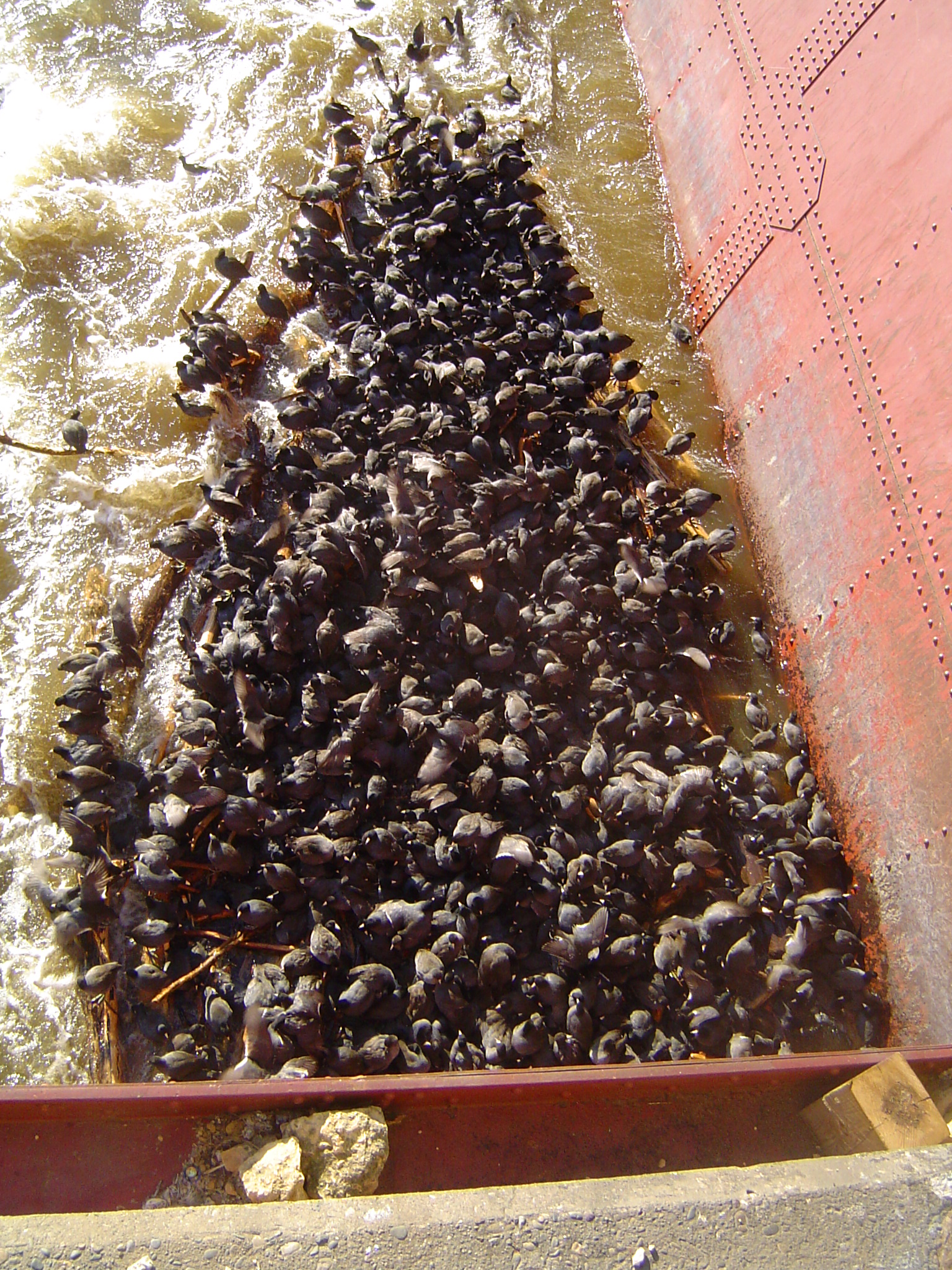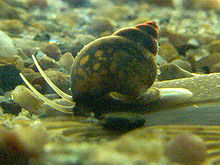Facts
The life style of Cyathocotyle bushiensis is interesting in itself but there are some other random facts that haven't been talked about throughout this webpage yet that are quite interesting.
A lethal dose of C. bushiensis can actually be ingested by the definitive host. This can occur within a 24 hour period of time. The ducks do not have to ingest a lot of infected snails, but only a few snails that contain many metacercariae. Within ten days of this lethal ingestion the ducks will die. They exhibit multiple characteristics before they die. The first sign they have ingested a lethal dose is they won't be able to fly. They will have to swim or walk to their destination. After a period of time they will no longer be able to dive for food. When this happens they remain on the shore until the parasite kills them (Hermann & Sorenseen, 2009).

The picture above shows coot that are either dead or dying in the lock and dam.
Taken by: Jennie Sauer
During the development of C. bushiensis they form a sporocyst in their first intermediate host. During May 2006 a snail was found to be inhabited by a sporocyst of C. bushiensis. This has led scientists to believe that the parasite may be able to survive through the winter inhabited in B. tentaculata as a sporocyst (Hermann & Sorenseen, 2009).
While testing the infection of waterfowl with C. bushiensis scientists have found waterfowl may be able to build up a resistance to the re-infection of the parasite. During the tests waterfowl had been given an initial injection of C. bushiensis and on Day 15 of their infection they were given another dose. When examined on Day 22 scientists found no additional parasites in the intestine or eggs in the fecal matter. This was evidence that there could be an immunity built up by these ducks in order to avoid becoming re-infected with C. bushiensis (Hoeve & Scott, 1988).
To learn more about these facts please see the Habitat page.
